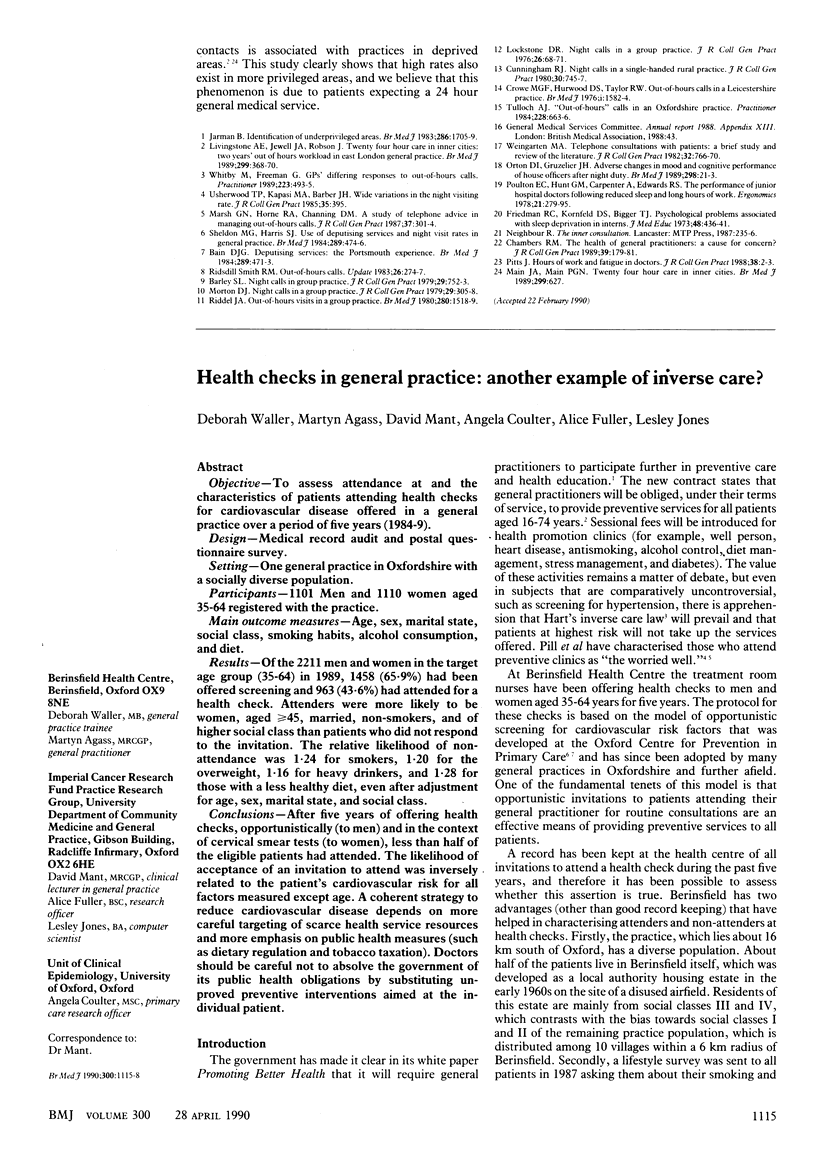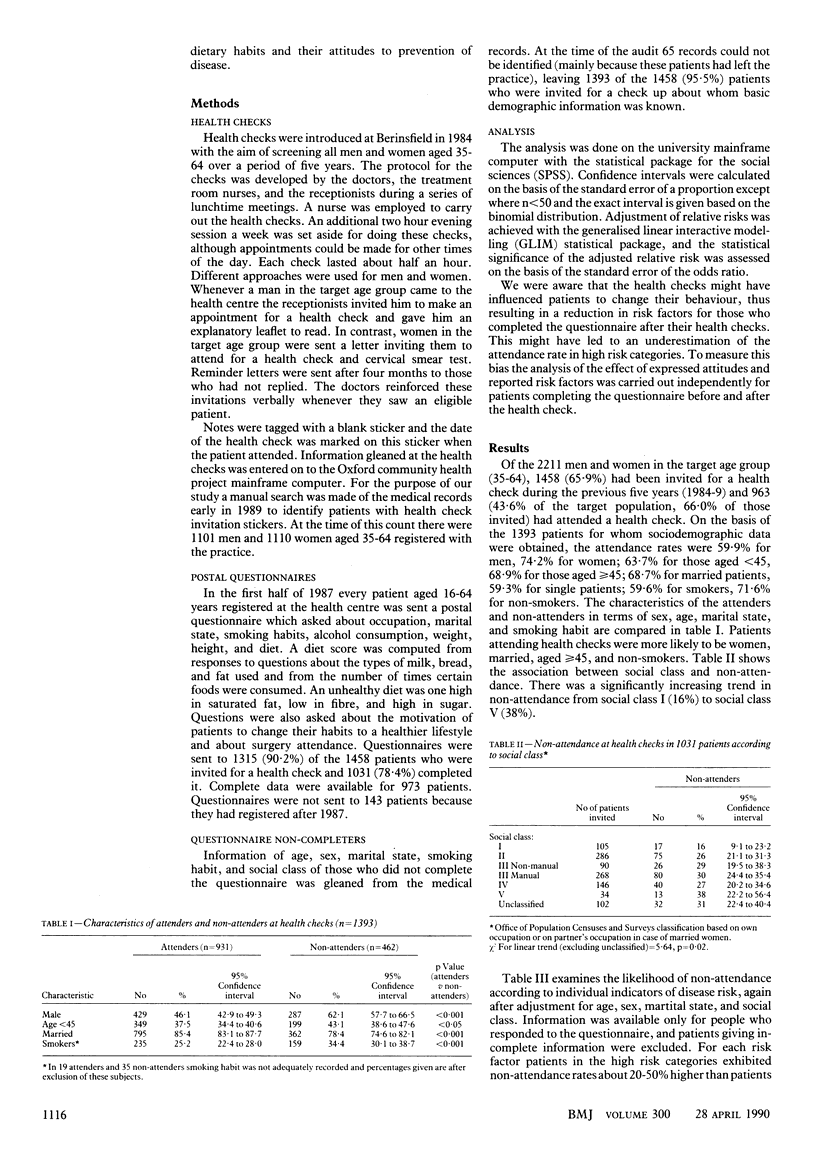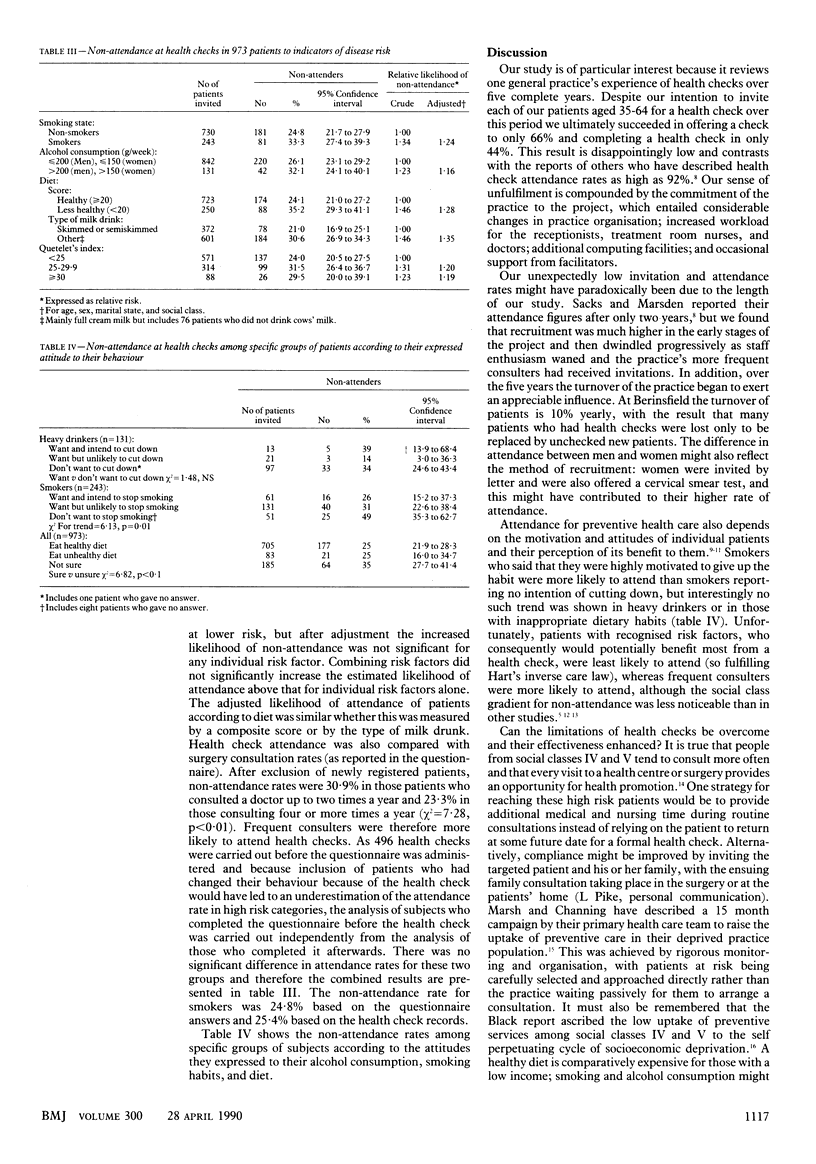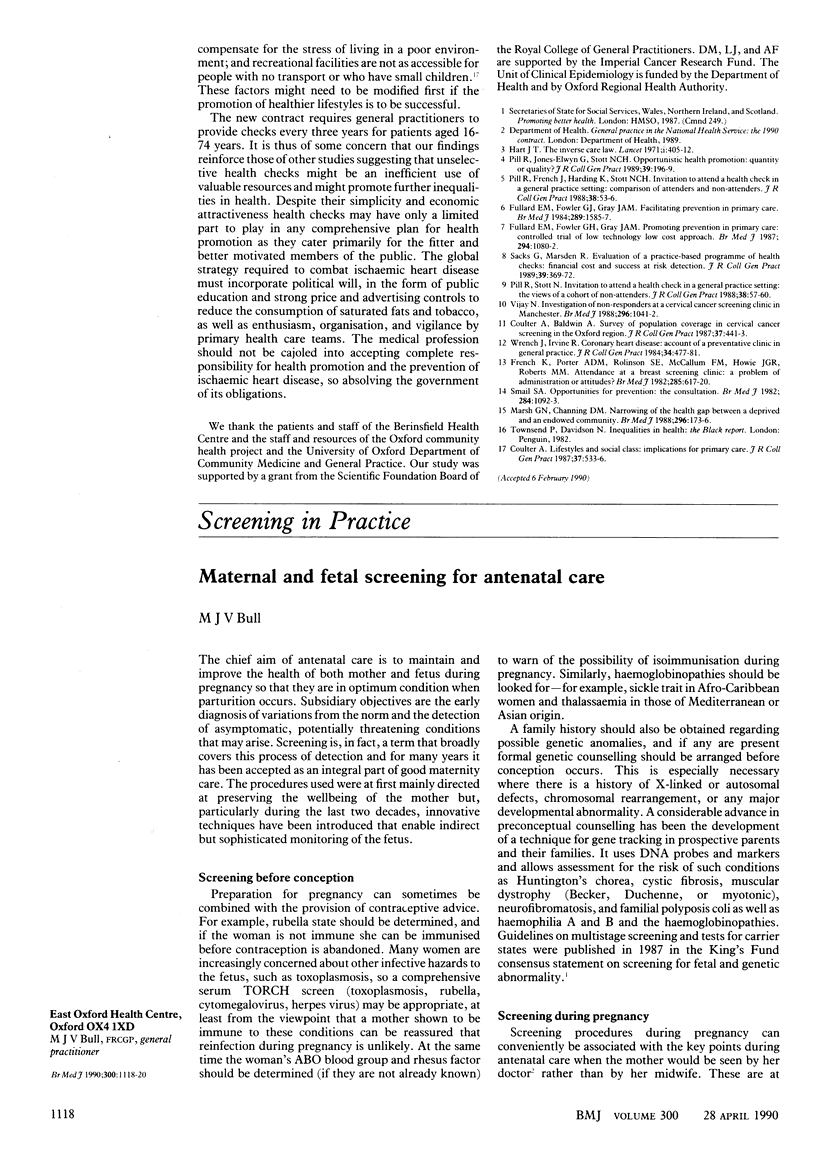Abstract
OBJECTIVE--To assess attendance at and the characteristics of patients attending health checks for cardiovascular disease offered in a general practice over a period of five years (1984-9). DESIGN--Medical record audit and postal questionnaire survey. SETTING--One general practice in Oxfordshire with a socially diverse population. PARTICIPANTS--1101 Men and 1110 women aged 35-64 registered with the practice. MAIN OUTCOME MEASURES--Age, sex, marital state, social class, smoking habits, alcohol consumption, and diet. RESULTS--Of the 2211 men and women in the target age group (35-64) in 1989, 1458 (65.9%) had been offered screening and 963 (43.6%) had attended for a health check. Attenders were more likely to be women, aged greater than or equal to 45, married, non-smokers, and of higher social class than patients who did not respond to the invitation. The relative likelihood of non-attendance was 1.24 for smokers, 1.20 for the overweight, 1.16 for heavy drinkers, and 1.28 for those with a less healthy diet, even after adjustment for age, sex, marital state, and social class. CONCLUSIONS--After five years of offering health checks, opportunistically (to men) and in the context of cervical smear tests (to women), less than half of the eligible patients had attended. The likelihood of acceptance of an invitation to attend was inversely related to the patient's cardiovascular risk for all factors measured except age. A coherent strategy to reduce cardiovascular disease depends on more careful targeting of scarce health service resources and more emphasis on public health measures (such as dietary regulation and tobacco taxation). Doctors should be careful not to absolve the government of its public health obligations by substituting unproved preventive interventions aimed at the individual patient.
Full text
PDF



Selected References
These references are in PubMed. This may not be the complete list of references from this article.
- Coulter A., Baldwin A. Survey of population coverage in cervical cancer screening in the Oxford region. J R Coll Gen Pract. 1987 Oct;37(303):441–443. [PMC free article] [PubMed] [Google Scholar]
- Coulter A. Lifestyles and social class: implications for primary care. J R Coll Gen Pract. 1987 Dec;37(305):533–536. [PMC free article] [PubMed] [Google Scholar]
- French K., Porter A. M., Robinson S. E., McCallum F. M., Howie J. G., Roberts M. M. Attendance at a breast screening clinic: a problem of administration or attitudes. 1982 Aug 28-Sep 4Br Med J (Clin Res Ed) 285(6342):617–620. doi: 10.1136/bmj.285.6342.617. [DOI] [PMC free article] [PubMed] [Google Scholar]
- Fullard E., Fowler G., Gray M. Facilitating prevention in primary care. Br Med J (Clin Res Ed) 1984 Dec 8;289(6458):1585–1587. doi: 10.1136/bmj.289.6458.1585. [DOI] [PMC free article] [PubMed] [Google Scholar]
- Fullard E., Fowler G., Gray M. Promoting prevention in primary care: controlled trial of low technology, low cost approach. Br Med J (Clin Res Ed) 1987 Apr 25;294(6579):1080–1082. doi: 10.1136/bmj.294.6579.1080. [DOI] [PMC free article] [PubMed] [Google Scholar]
- Hart J. T. The inverse care law. Lancet. 1971 Feb 27;1(7696):405–412. doi: 10.1016/s0140-6736(71)92410-x. [DOI] [PubMed] [Google Scholar]
- Marsh G. N., Channing D. M. Narrowing the health gap between a deprived and an endowed community. Br Med J (Clin Res Ed) 1988 Jan 16;296(6616):173–176. doi: 10.1136/bmj.296.6616.173. [DOI] [PMC free article] [PubMed] [Google Scholar]
- Pill R. M., Jones-Elwyn G., Stott N. C. Opportunistic health promotion: quantity or quality? J R Coll Gen Pract. 1989 May;39(322):196–200. [PMC free article] [PubMed] [Google Scholar]
- Pill R., Stott N. Invitation to attend a health check in a general practice setting: the views of a cohort of non-attenders. J R Coll Gen Pract. 1988 Feb;38(307):57–60. [PMC free article] [PubMed] [Google Scholar]
- Sacks G., Marsden R. Evaluation of a practice-based programme of health checks: financial cost and success at risk detection. J R Coll Gen Pract. 1989 Sep;39(326):369–372. [PMC free article] [PubMed] [Google Scholar]
- Smail S. A. Opportunities for prevention: the consultation. Br Med J (Clin Res Ed) 1982 Apr 10;284(6322):1092–1093. doi: 10.1136/bmj.284.6322.1092. [DOI] [PMC free article] [PubMed] [Google Scholar]
- Wrench J. G., Irvine R. Coronary heart disease: account of a preventive clinic in general practice. J R Coll Gen Pract. 1984 Sep;34(266):477–481. [PMC free article] [PubMed] [Google Scholar]


